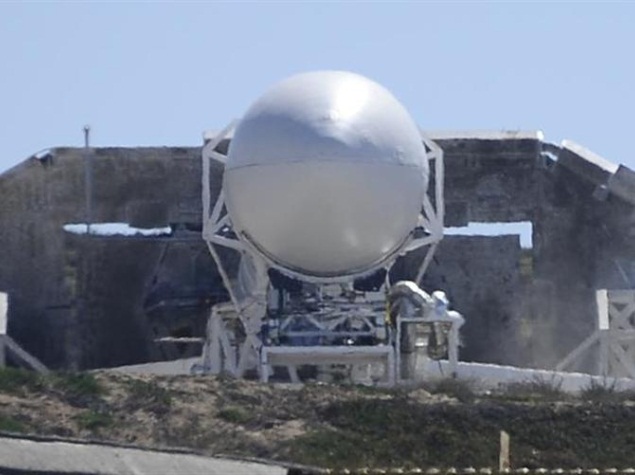- Home
- Science
- Science News
- Isro to Conduct Test Flight of GSLV Mark 3 in Mid December
Isro to Conduct Test Flight of GSLV Mark 3 in Mid-December

The satellite launch vehicle will have a capacity of carrying approximately four tonnes of load, and will be able to launch heavier satellites in space, Radhakrishnan said giving the 50th Foundation Day Address at the Institute for Defence Studies and Analyses (IDSA).
"In mid-December, we will have the experimental flight of the GSLV Mark 3. It will not launch a satellite in this flight, and will be passive in the upper stage," said the Indian Space Research Organisation (Isro) chief.
"It will be ready for developmental flight in two years," he added.
The vehicle is 42.4 metres tall compared to the other GSLV which is 49 metres. It will be a three-stage vehicle.
Development for the GSLV Mark 3 began in the early 2000s, with the first launch planned for 2009-2010.
Several factors, including the April 15, 2010 failure of the Isro-developed cryogenic upper stage on the GSLV Mk II, have delayed the programme.
Pointing out that the cryogenic engine used in the launch vehicle, developed totally indigenously, make India one of the few countries with the technology, Radhakrishnan said India still lagged behind several other countries in the capacity of its launch vehicles.
"China has launch vehicles with 5.5 tonnes capacity, Europe has 11 tonnes capacity launch vehicle, US has 13 tonnes capacity launch vehicles and Russia has nearly 10 tonnes capacity vehicles," he said.
The Isro chief said the long term target is to make a launch vehicle with 12 tonnes capacity.
Get your daily dose of tech news, reviews, and insights, in under 80 characters on Gadgets 360 Turbo. Connect with fellow tech lovers on our Forum. Follow us on X, Facebook, WhatsApp, Threads and Google News for instant updates. Catch all the action on our YouTube channel.
Related Stories
- Samsung Galaxy Unpacked 2025
- ChatGPT
- Redmi Note 14 Pro+
- iPhone 16
- Apple Vision Pro
- Oneplus 12
- OnePlus Nord CE 3 Lite 5G
- iPhone 13
- Xiaomi 14 Pro
- Oppo Find N3
- Tecno Spark Go (2023)
- Realme V30
- Best Phones Under 25000
- Samsung Galaxy S24 Series
- Cryptocurrency
- iQoo 12
- Samsung Galaxy S24 Ultra
- Giottus
- Samsung Galaxy Z Flip 5
- Apple 'Scary Fast'
- Housefull 5
- GoPro Hero 12 Black Review
- Invincible Season 2
- JioGlass
- HD Ready TV
- Laptop Under 50000
- Smartwatch Under 10000
- Latest Mobile Phones
- Compare Phones
- Realme Narzo 90x 5G
- Realme Narzo 90 5G
- Vivo S50 Pro Mini
- Vivo S50
- OPPO Reno 15c
- Redmi Note 15 5G
- Redmi Note 15 Pro 5G
- Redmi Note 15 Pro+ 5G
- Asus ProArt P16
- MacBook Pro 14-inch (M5, 2025)
- OnePlus Pad Go 2
- Poco Pad M1
- Just Corseca Skywatch Pro
- Honor Watch X5
- Acerpure Nitro Z Series 100-inch QLED TV
- Samsung 43 Inch LED Ultra HD (4K) Smart TV (UA43UE81AFULXL)
- Asus ROG Ally
- Nintendo Switch Lite
- Haier 1.6 Ton 5 Star Inverter Split AC (HSU19G-MZAID5BN-INV)
- Haier 1.6 Ton 5 Star Inverter Split AC (HSU19G-MZAIM5BN-INV)

















